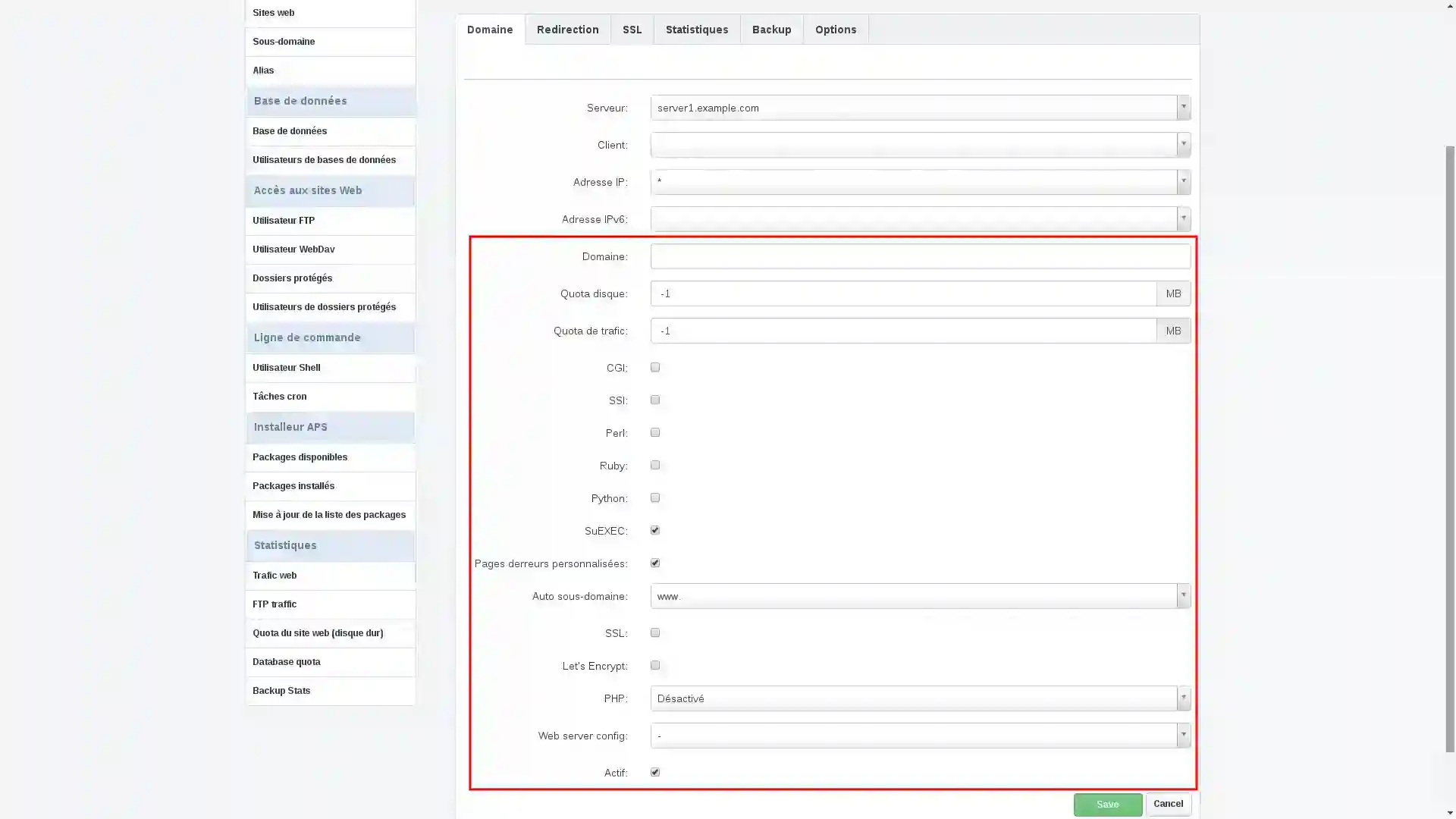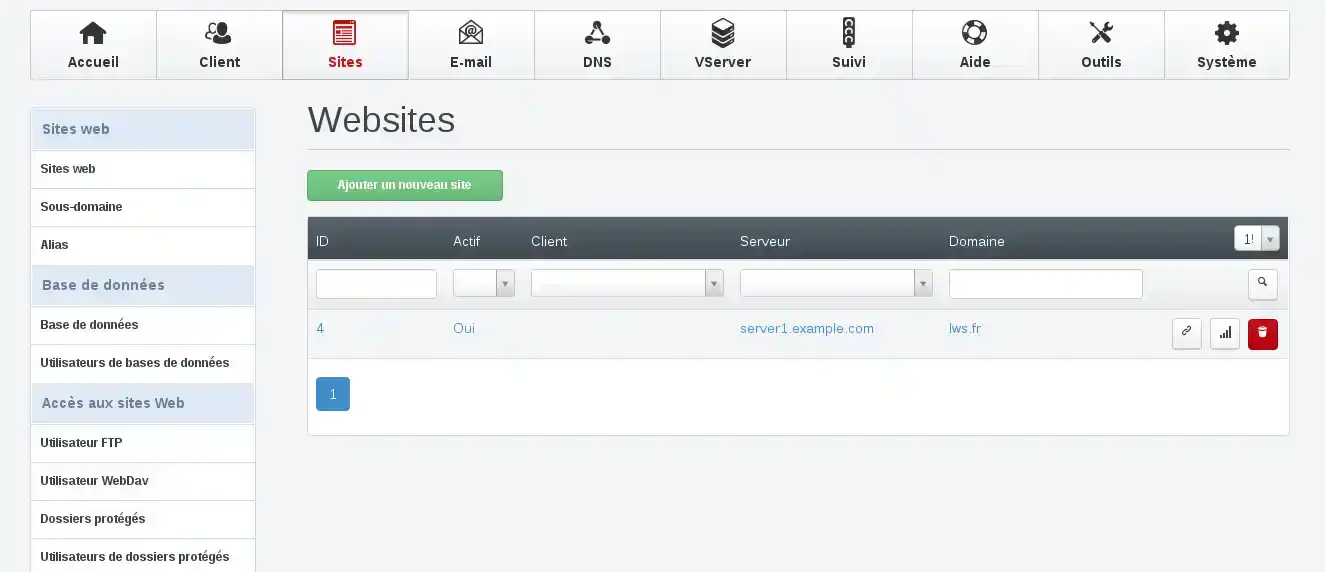Rate this article :
4/5 | 11 opinion
This article was useful to you ?
Yes
No
Vous avez noté 0 étoile(s)
Sommaire
Procédure
To add a website, you first need a domain name.
A domain name is a "mask" on an IP address. The purpose of a domain name is to easily remember and communicate the address of a set of servers(website, email, FTP, etc.). For example, google.com is easier to remember than 142.250.185.164.
Find out here how to order a domain name
We assume that your domain is active and that you have already modified the A record field of your domain name on the server
2. Click on the "Sites" tab and then on the "Add a site" button.

3. Complete the fields defined in the red square.
In most cases, you just need to validate the domain name and then click on "Save".
Be careful not to choose FAST-CGI in the PHP section. This feature may cause compatibility problems with some sites. Preferably choose PHP-FPM or MOD-PHP.
If you wish to limit the disk space used by your site, fill in the Disk Quota section with the number of MB required. Only this section allows you to make this restriction. The equivalent section in the FTP user creation form is not active.

4. After registration you should see this screen:

We have prepared full documentation on this subject: How do I link my domain name to my VPS server?
When you order a domain name, it is not automatically linked to your VPS, as each domain comes with 2 GB hosting without PHP and the option of creating 1 email address.
You therefore need to tell your domain that you are not using the default configuration but that of your VPS.
Disk quota is the space you wish to allocate for the site
Traffic quota is the traffic allocated for this site. We recommend that you leave this value unchanged.
These two values default to -1, which means no limit.
CGI (Common Gateway Interface), SSI (Server Side Includes) and SuEXEC are three modules of the Apache service.
For more information, see the official Apache documentation.
Ruby is a free programming language. It is interpreted, object-oriented and multi-paradigm. The language was standardised in Japan in 2011 (JIS X 3017:2011)2, and in 2012 by the International Organisation for Standardisation.
Python is also an object-oriented, multi-paradigm, multi-platform programming language. It supports structured, functional and object-oriented imperative programming. It features strong dynamic typing, automatic memory management using garbage collection and an exception handling system, making it similar to Perl, Ruby, Scheme, Smalltalk and Tcl.
Rate this article :
4/5 | 11 opinion
This article was useful to you ?
Yes
No
1mn reading
How do I create a sub-domain on a dedicated VPS server?
1mn reading
ISPconfig - How do I link my domain name to my VPS server?
1mn reading
It's easy to configure my domains on my VPS
1mn reading
How to migrate a Wordpress site from an ISPCONFIG Apache VPS to Nginx
Bonjour,
Je vous remercie pour votre message.
Oui, c’est tout à fait possible d’héberger à la fois un site Flask/Dash (Python) et des processus n8n sur un même serveur VPS.
Cependant, cela nécessite de bonnes connaissances techniques, notamment en gestion de services, configuration réseau et sécurité serveur.
Je vous recommande d’utiliser Docker, qui permet d’exécuter chaque application dans un conteneur isolé. Cela simplifie la gestion, le déploiement et évite les conflits de dépendances entre les différents environnements.
Voici quelques documentations qui devrait vous aider au mieux dans vos démarches :
Effectivement ce type de VPS n'est pas infogéré et nous ne pourrons pas effectuer des actions sur ce dernier.
Je vous remercie pour votre attention et reste à votre disposition pour toute autre question ou complément d'information.
Cordialement, L'équipe LWS